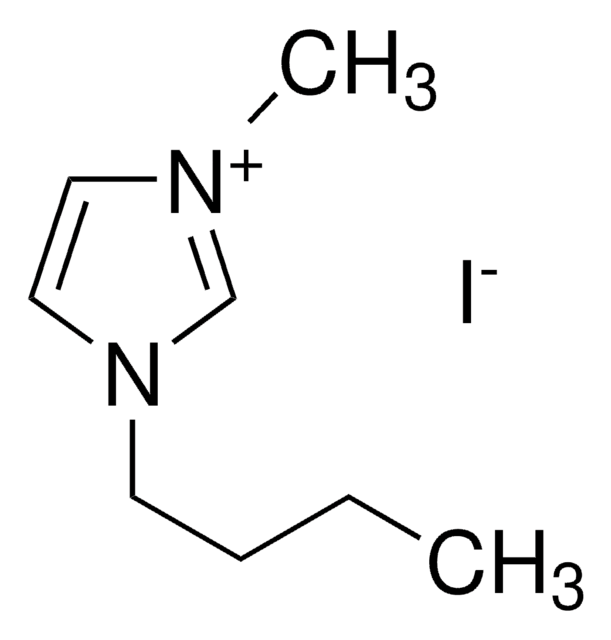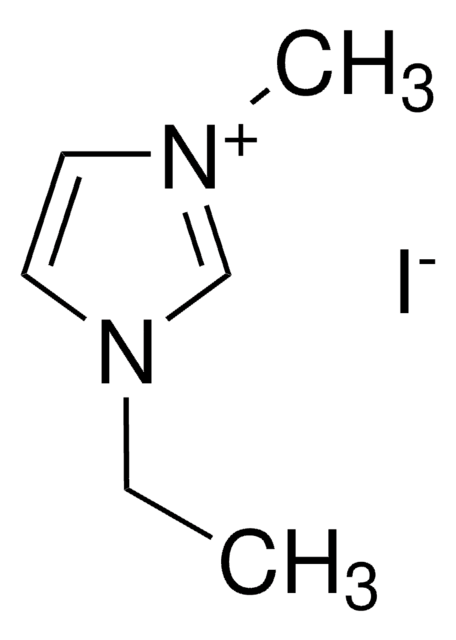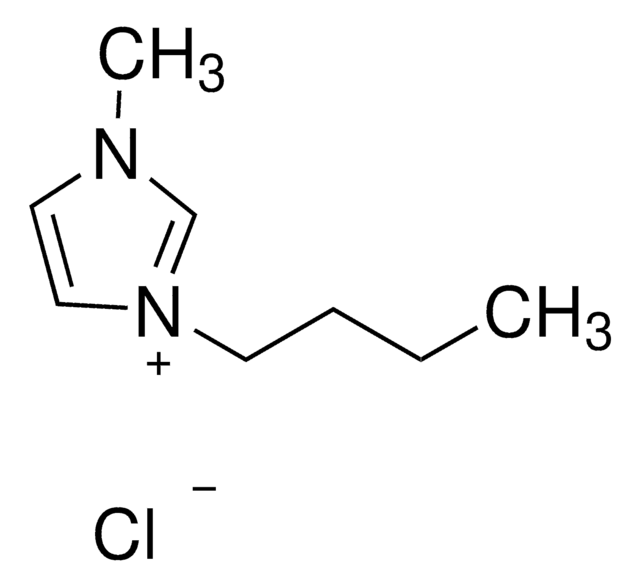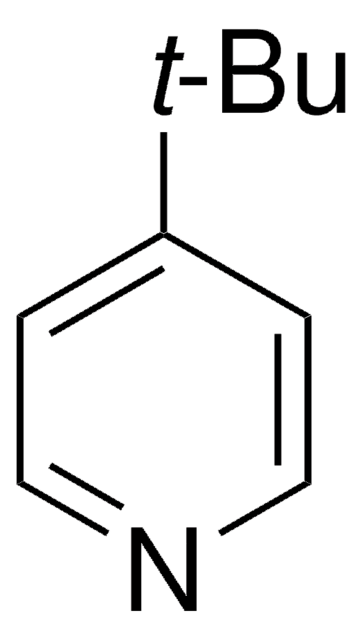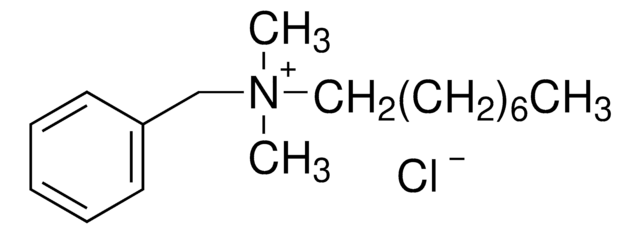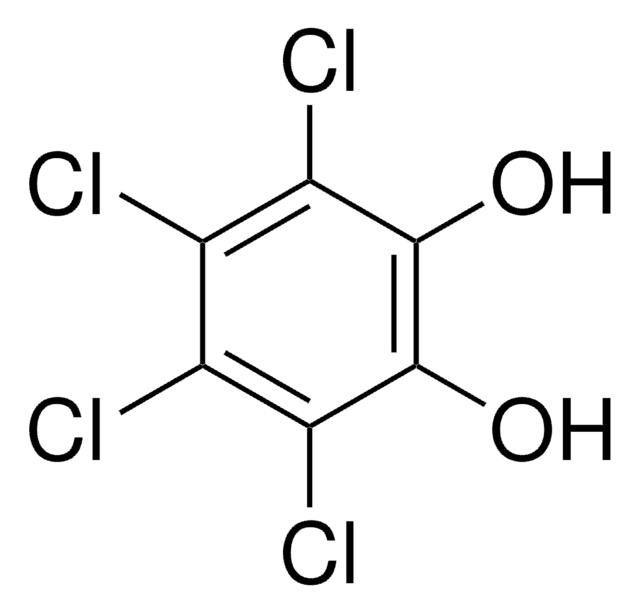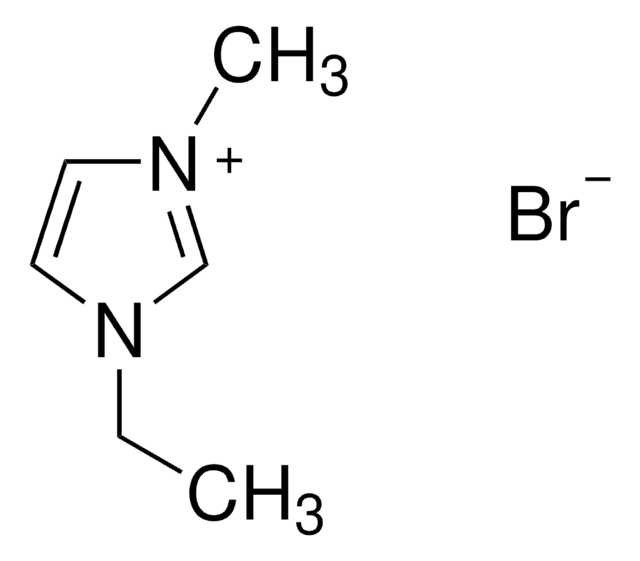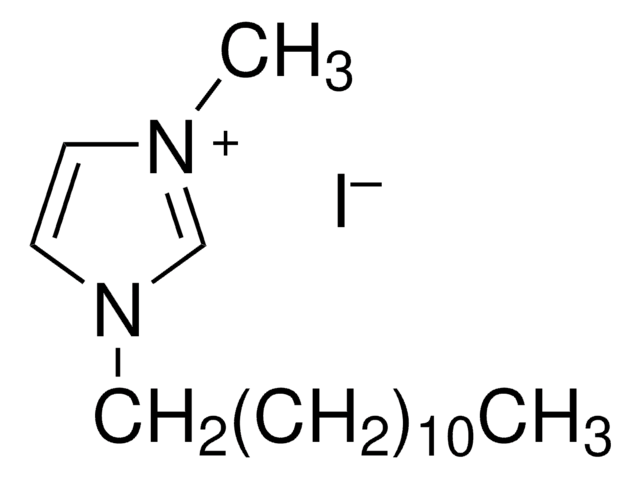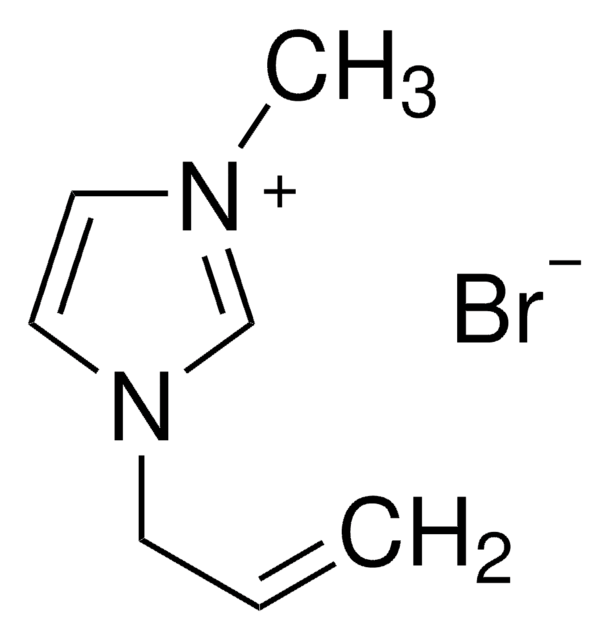49637
1-Methyl-3-propylimidazolium iodide
≥98.0% (HPLC)
Sinónimos:
MPII
Iniciar sesiónpara Ver la Fijación de precios por contrato y de la organización
About This Item
Fórmula empírica (notación de Hill):
C7H13IN2
Número de CAS:
Peso molecular:
252.10
Número MDL:
Código UNSPSC:
12352100
ID de la sustancia en PubChem:
NACRES:
NA.22
Productos recomendados
Nivel de calidad
Análisis
≥98.0% (HPLC)
impurezas
≤0.3% water
≤50 mg/kg chloride and bromide
cadena SMILES
[I-].CCC[n+]1ccn(C)c1
InChI
1S/C7H13N2.HI/c1-3-4-9-6-5-8(2)7-9;/h5-7H,3-4H2,1-2H3;1H/q+1;/p-1
Clave InChI
IVCMUVGRRDWTDK-UHFFFAOYSA-M
Categorías relacionadas
Descripción general
1-Methyl-3-propylimidazolium iodide can be prepared by reacting 1-methylimidazole and propyl iodide.
Aplicación
MPII in combination with poly(vinylidenefluoride-co-hexafluoropropylene) (PVDF-HFP) forms an ionic liquid polymer gel electolyte, which can be used in dye-sensitized nanocrystalline titanium dioxide (TiO2) solar cells.
Non-aqueous electrolyte for dye-sensitized solar cells.
Código de clase de almacenamiento
10 - Combustible liquids
Clase de riesgo para el agua (WGK)
WGK 3
Punto de inflamabilidad (°F)
Not applicable
Punto de inflamabilidad (°C)
Not applicable
Equipo de protección personal
Eyeshields, Gloves
Elija entre una de las versiones más recientes:
¿Ya tiene este producto?
Encuentre la documentación para los productos que ha comprado recientemente en la Biblioteca de documentos.
Los clientes también vieron
Thomas Stergiopoulos et al.
Nanoscale research letters, 6(1), 307-307 (2011-06-30)
The presence of specific chemical additives in the redox electrolyte results in an efficient increase of the photovoltaic performance of dye-sensitized solar cells (DSCs). The most effective additives are 4-tert-butylpyridine (TBP), N-methylbenzimidazole (NMBI) and guanidinium thiocyanate (GuNCS) that are adsorbed
Mark W Kryman et al.
Langmuir : the ACS journal of surfaces and colloids, 32(6), 1521-1532 (2016-01-23)
A library of six selenorhodamine dyes (4-Se-9-Se) were synthesized, characterized, and evaluated as photosensitizers of TiO2 in dye-sensitized solar cells (DSSCs). The dyes were constructed around either a bis(julolidyl)- or bis(half-julolidyl)-modified selenoxanthylium core functionalized at the 9-position with a thienyl
Peng Wang et al.
Chemical communications (Cambridge, England), (24), 2972-2973 (2003-01-23)
An ionic liquid polymer gel containing 1-methyl-3-propylimidazolium iodide (MPII) and poly(vinylidenefluoride-co-hexafluoropropylene) (PVDF-HFP) has been employed as quasi-solid-state electrolyte in dye-sensitized nanocrystalline TiO2 solar cells with an overall conversion efficiency of 5.3% at AM 1.5 illumination.
Influence of various cations on redox behavior of I- and I 3- and comparison between KI complex with 18-crown-6 and 1, 2-dimethyl-3-propylimidazolium iodide in dye-sensitized solar cells.
Shi C, et al.
Electrochimica Acta, 50(13), 2597-2602 (2005)
High efficiency dye-sensitized nanocrystalline solar cells based on ionic liquid polymer gel electrolyte.
Wang P, et al.
Chemical Communications (Cambridge, England), 24, 2972-2973 (2002)
Nuestro equipo de científicos tiene experiencia en todas las áreas de investigación: Ciencias de la vida, Ciencia de los materiales, Síntesis química, Cromatografía, Analítica y muchas otras.
Póngase en contacto con el Servicio técnico